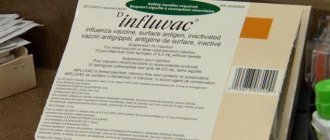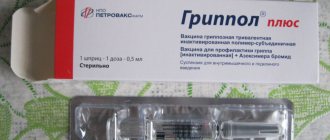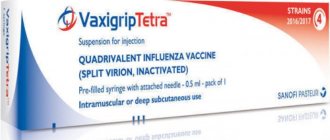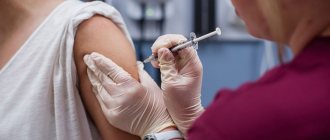Influenza is a disease that affects almost all people. This is an acute infectious disease of the respiratory system, which is provoked by the influenza virus. The virus is simply transmitted from one person to another. The more well-known route of transmission is airborne droplets. Virus particles are carried through the air when a sick person coughs or sneezes. In addition, the virus can enter the body of a healthy person in another way. For example, infection through a handkerchief. During the period of coughing or sneezing, talking, a person infected with the virus sprays small particles of saliva and sputum, which include a large number of microorganisms. Therefore, an infected area with a radius of three meters is formed around the sick person.
The disease can cause complications: swelling of the brain, inflammation of the hearing organs, liver damage. It is much easier to prevent a disease than to get rid of its results. It is rational to use a vaccine to prevent disease. Manufacturer Agrippal Novartis Vaccines and Diagnostics S. r.l. Italy. The Agrippal vaccine has been registered and used in Russia since 2000.
Why is it worth vaccinating children and adults?
Now there are many drugs against influenza, but doctors insist on using a vaccine. Is Agrippal vaccination necessary? What are the arguments for and against? You need to understand the characteristics of the influenza virus:
- The method of transmission of the virus is airborne droplets. However, most people lose sight of the fact that you can become infected by talking to someone who is sick;
- The incubation period is two days. During this period, no signs are expressed, but the virus actively multiplies in the body;
- Re-infection with the influenza virus. It is important to pay attention to the fact that it is indeed possible to become infected with the flu again. Why is this happening? This concerns the variability of bacterial proteins. A person who has had one type of influenza can get sick again with influenza, but of a different type;
- The virus begins to multiply after it penetrates the upper respiratory organs. After eight hours, the number rises into the thousands;
- It is important to know when to vaccinate with Agrippal. The flu shot should be given in early autumn (September, October) as it takes two to four weeks for protection to develop. There is no point in getting vaccinated in January;
- The disease can give rise to complications: pneumonia, kidney disease, brain disease and, worst of all, death;
- When treatment is started late, it is ineffective.
Popular Say goodbye to herpes with Vitagerpavac vaccine
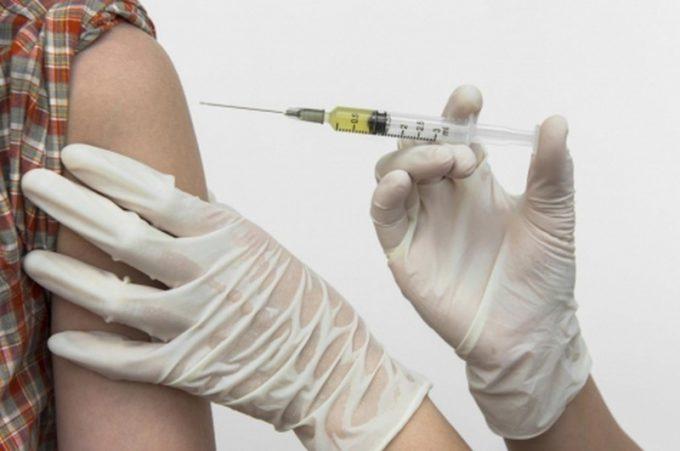
Absolutely everyone needs vaccination, especially people who are considered at risk.
Indications
Agrippal's instructions state that the vaccine is prescribed to prevent influenza starting from 6 months of age. Immunization is especially presented to adults and children at risk:
- adults and children with heart disease, long-term respiratory diseases, low hemoglobin levels, congenital and acquired immune problems, who have problems with glucose metabolism;
- elderly people (after sixty years);
- people who work in clinics are at higher risk of becoming infected.
Contraindications include: sensitivity to chicken egg white and the presence of allergic interactions to other elements included in the structure of the vaccine.
Vaccination against influenza is not carried out when the patient has an acute form of an infectious disease.
Compound
Active substances: hemagglutinin and neuraminidase antigens; additional components: sodium chloride, potassium salt of hydrochloric acid, potassium salt of orthophosphoric acid, sodium phosphate, magnesium chlorate, calcium chloride, distilled/sterile water.
Dose
Agrippal must not be injected intravenously! The medicine is injected intramuscularly into the deltoid muscle. In a young child, the vaccine can be injected into the anterior lateral area of the thigh.

- Before administration, the contents of the syringe must be heated to 23 degrees. Then the ampoule needs to be shaken;
- Children from six months to three years old: 0.25 ml;
- A child over three years old who has not been vaccinated will previously need a double dosage of 0.25 ml. with a break of a month;
- Children under three years of age and adults: 0.5 once.
The ampoule with the drug is shaken before use to form a homogeneous consistency. The skin in the injection area is wiped with seventy percent ethanol. Remember, you cannot inject the Agrippal vaccine intravenously! The needle should not damage the vessel.
When using a syringe containing 0.5 milliliters of solution for immunization of children who are given half the dosage (0.25 ml), half of the solution must be withdrawn. To do this, you need to press the piston to a special mark. Then you need to enter the remaining volume.
Agrippal S1 (Agrippal)
Release form, composition and packaging
Suspension for intramuscular and subcutaneous administration in the form of a colorless, transparent liquid.
0.5 ml (1 dose) purified surface antigens of influenza viruses types A and B grown on chicken embryo culture inactivated by formaldehyde; represented by the following strains.
Excipients: sodium chloride, potassium chloride, potassium phosphate dihydrate, sodium phosphate dihydrate, magnesium chloride, calcium chloride, water for injection.
- hemagglutinin.
- The antigenic composition of the vaccine complies with WHO recommendations for the current epidemic season.
Clinical and pharmacological group: Vaccine for the prevention of influenza.
pharmachologic effect
Vaccine for the prevention of influenza. Protective levels of antibodies usually develop 2-3 weeks after vaccination, and the duration of immunity ranges from 6 to 12 months.
Indications
The Agrippal S1 vaccine is intended for the prevention of influenza from 6 months of age. Immunization is especially indicated for adults and children from the following risk groups:
- adults and children with concomitant diseases of the cardiovascular system, chronic respiratory diseases, chronic kidney diseases, chronic anemia, congenital and acquired immunodeficiencies, diabetes and other chronic metabolic diseases;
- persons over 60 years of age;
- persons with a high professional risk of infection and persons who, due to their professional activities, can become a source of infection. During periods of epidemics or pandemics, it is recommended to vaccinate all groups of the population.
Dosage regimen
The vaccine cannot be administered intravenously! The vaccine is administered intramuscularly, mainly into the deltoid muscle, or deep subcutaneously. In young children, the vaccine can be injected into the anterior lateral thigh. Before use, the contents of the syringe should be warmed to room temperature.
Shake thoroughly.
Children from 6 months to 35 months are prescribed 0.25 ml (half the dose).
For children who have not previously been vaccinated , double vaccination is recommended with an interval of 4 weeks. Children over 35 months , adolescents and adults are prescribed 0.5 ml.
When using a syringe containing 0.5 ml of vaccine to immunize children for whom half the dose (0.25 ml) is indicated, it is necessary to remove half of its contents by pressing the plunger to a special mark. The remaining amount of vaccine should then be administered.
Vaccination should be carried out, if possible, before the start of the flu season (in the autumn-winter period). However, depending on the epidemiological situation, it may be necessary to conduct it at other times of the year. Vaccination is recommended annually.
Side effect
Regular (>1/100, <1/10)
Local reactions: redness, bruising, induration, pain and swelling at the injection site.
General reactions: fever, malaise, chills, weakness, headache, sweating, myalgia, arthralgia. These phenomena usually go away on their own within 1-2 days.
Unusual (>1/1000, <1/100)
Dermatological reactions: general skin reactions, including itching, urticaria, nonspecific skin irritation. Rare (>1/10,000, <1/1000)
From the nervous system: neuralgia, paresthesia (burning sensation, numbness), convulsions.
From the hematopoietic system: short-term thrombocytopenia. Allergic reactions have been noted, in rare cases leading to the development of shock, symptoms of serious allergic reactions, including anaphylactic reactions: sudden sharp drop in blood pressure, increased or decreased heart rate, unusual weakness or malaise, anxiety, nervousness, loss of consciousness, difficulty breathing and swallowing, itching (especially on the feet and palms), hives with or without swelling most often localized to the extremities, genital area, face (especially around the eyes and lips), rash (especially around the ears), nausea, vomiting, cramping stomach pain, diarrhea .
Very rare (1/10,000)
Vasculitis with impaired renal function is possible.
From the nervous system: encephalomyelitis, neuritis, Guillain-Barre syndrome (acute polyneuropathy with a predominant deterioration of motor function, paralysis). All of these side effects are usually short-term and transient in nature. If they appear, you should consult a doctor. The patient should be informed of the need to report to the doctor any unusual adverse reactions not described in these instructions.
Contraindications
- hypersensitivity to chicken egg white;
- a history of allergic reactions to other components included in the vaccine, or to a previous vaccination with this drug.
Vaccination of persons who have had an acute infectious disease is carried out 1 month after recovery. In mild forms of the disease, vaccination can be carried out after the temperature has normalized.
Pregnancy and lactation
The existing experience of using the vaccine in pregnant women has shown that Agrippal S1 does not have a teratogenic or toxic effect on the body. This vaccine can be used from the second trimester of pregnancy. For pregnant women who, for medical reasons, are at risk of developing complications after an influenza infection, vaccination is recommended at any stage of pregnancy. Vaccination can be carried out during the entire period of lactation (breastfeeding).
special instructions
As with other injectable vaccines, supplies should always be available to treat anaphylactic reactions. The vaccine may contain residual amounts of formaldehyde, cetyltrimethylammonium bromide and polysorbate 80, which are used in the vaccine production process (may cause hypersensitivity reactions). Overdose Data on overdose of the Agrippal S1 vaccine are not provided.
Drug interactions
The use of the Agrippal S1 vaccine within the framework of the preventive vaccination calendar for epidemic indications and inactivated vaccines of the national preventive vaccination calendar is possible simultaneously, provided that it is administered with different syringes and in different parts of the body or with an interval of one month. In this case, the possibility of increasing the intensity of adverse reactions should be taken into account. In patients receiving immunosuppressive therapy, as well as in people with congenital and acquired immunodeficiencies, vaccination may be less effective. False-positive ELISA results for antibodies against HIV infection (HIV1), hepatitis C virus, and especially against T-cell antibodies have been reported after influenza vaccination. human lymphotropic virus (HTLV1).
To exclude a false positive result, it is necessary to conduct a study using the Western Blot method. Short-term false-positive results may be associated with the appearance of IgM immunoglobulin in response to vaccination. The Agrippal S1 vaccine should not be mixed with other medicinal substances.
Storage conditions and periods
The vaccine should be stored in a place protected from light, out of reach of children, at a temperature of 2° to 8°C; do not freeze. The vaccine should be transported in accordance with SP 3.3.2.1248-03 by all types of covered transport at a temperature of 2° to 8°C; do not freeze.
Shelf life: 12 months. Do not use the vaccine after the expiration date stated on the label and outer packaging.
How to use the Agrippal vaccine
After the vaccine is injected, the patient is under the care of medical professionals for about half an hour. Any medicine, including an ampoule with a vaccine, must be opened taking into account the rules of asepsis and antiseptics. Once the ampoule has been opened and the contents have been used, the ampoule cannot be stored. Even if there is still some vaccine left in it.
Popular Vaccination against papilloma virus with Cervarix vaccine
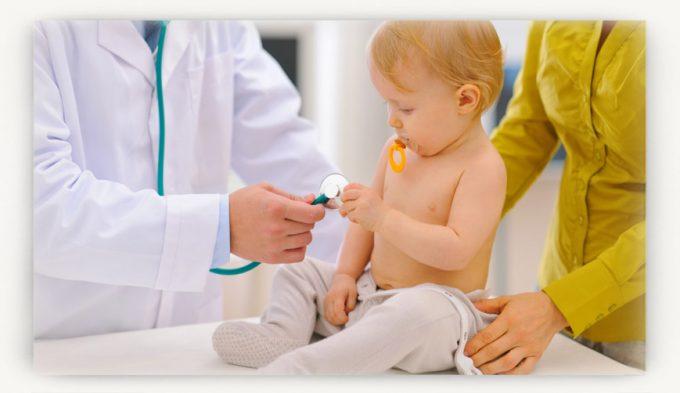
Before administering the vaccine, the doctor will examine the patient. If a child or adult has a body temperature above 37.7 degrees, then the vaccine should be postponed. Do not forget about the expiration date of the drug, since expired vaccine can be disposed of.
When the liquid in the ampoule has changed color or the container is damaged, vaccination is not carried out. The doctor should take the new vaccine Agrippal.
Minor interactions are rare. When they appear, they are usually characterized by slight redness and a painful sensation at the injection site. They go away completely after two days. Body temperature may rise slightly, trembling, pain in the head.
conclusions
1. The high epidemiological effectiveness of the Agrippal S1 vaccine, which was used to prevent influenza in Moscow during the 2008–2009 epidemic season, has been established. In general, in the group of once vaccinated individuals, the incidence of influenza and ARVI was 4.32 times lower compared to the group of unvaccinated people. The epidemiological effectiveness rate (ER) was 76.8%. 2. Vaccination of medical workers with Agrippal SI turned out to be more effective than immunization of preschool and school-aged children with the same drug: EC was 93.9; 70.8 and 65.7%, respectively (t = 29.5; 28.98; p < 0.05). The different effectiveness of vaccination between children and adults may be explained by the presence among adults of individuals who are immune to influenza viruses due to vaccination in the last epidemic season and/or influenza diseases suffered in the past. 3. Agrippal S1 was found to be well tolerated by both children and adults: in the vaccinated group there were no calls for medical help within a month after vaccination. 4. The effectiveness of vaccination against influenza with Agrippal S1 was confirmed by data from virological and serological studies: in the vaccinated group, the diagnosis of “influenza” was laboratory confirmed in 1 patient (0.8 ± 0.81%), in the unvaccinated group - in 7 (t = 2, 14; p < 0.05). 5. According to calculated data, vaccination against influenza with the drug Agrippal SI of 10,102 children and 7,000 adults prevented economic damage in the amount of 49,918.32 thousand. rub. (2.92 thousand rubles per vaccination given).
Use of the substance together with other vaccinations
The Agrippal S1 vaccine can be introduced simultaneously with all vaccinations that are indicated in the preventive vaccination calendar. However, it is worth considering that vaccinations need to be done in different zones.
The use of the Agrippal S1 vaccine together with other drugs does not in any way affect the development of immunity. Tolerability of vaccines is not worsened, and the number of minor interactions does not increase.
Pregnancy period
Agrippal S1 does not exhibit toxic effects. Therefore, the vaccine can be given to pregnant women at all stages of pregnancy.
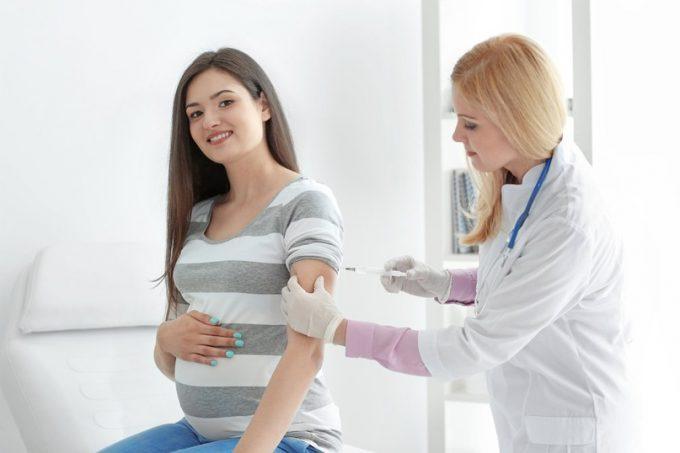
It is better to vaccinate starting from the second trimester. According to medical evidence, pregnant girls who are included in the group of developing complications after the flu are recommended to be vaccinated at all stages, just like the Begrivak vaccine.
After receiving the flu vaccine
No preparation is required before administering the substance. After vaccination, you should not scratch or touch the injection site for two days. For the next three days you cannot visit the baths or swim. Before the procedure, you need to tell your doctor about taking various pharmaceutical medications.
Material and methods
Brief characteristics of the Agrippal S1 vaccine used for immunization of certain groups of the Moscow population during the 2008–2009 epidemic season.
Agrippal S1 is a highly purified inactivated trivalent subunit vaccine for the prevention of influenza of the third generation (Novartis Vaccines and Diagnostics S.r.l., Italy; registration certificate: P No. 012054/01 dated March 23, 2007). The vaccine is registered by the Ministry of Health and Social Development of the Russian Federation and has been used in Russia since 2000. The vaccine is purified surface antigens of influenza viruses type A and B grown on chicken embryo culture inactivated by formaldehyde.
The vaccine complies with WHO recommendations for the 2008–2009 season. The vaccine Agrippal S1 is a colorless transparent liquid. One dose of the vaccine (0.5 ml) contains the following strains of influenza virus: • A/Brisbane/59/2007 (II1N1) similar (A/Brisbane/59/2007, IVR-148) 15 mcg hemagglutinin; • A/Brisbane/10/2007 (H3N2) similar (A/Uruguay/716/2007, NYMC X-175C) 15 μg of hemagglutinin; • B/Florida/4/2006 similar (B/Plorida/4/2006) 15 µg hemagglutinin. Other ingredients: sodium chloride, potassium chloride, potassium phosphate dihydrate, sodium phosphate dihydrate, magnesium chloride, calcium chloride, water for injection. Agrippal S1 does not contain preservatives or mercury compounds, the drug is intended for the prevention of influenza in adults and children from 6 months of age . The vaccine is administered intramuscularly, mainly into the deltoid muscle, or deep subcutaneously, in young children - into the anterior lateral part of the thigh.
The vaccine is produced in a sterile glass syringe of hydrolytic class type I (Eur. Pharm.), 0.5 ml per bottle (1 blister with instructions in Russian).
Contingents of persons participating in the study
This study to evaluate the preventive effectiveness of the Agrippal S1 vaccine was carried out in Moscow. The study involved children (3–6 years old) attending preschool institutions (preschool institutions) and schools (from 1st to 11th grade) of 5 administrative districts of the city (South, South-East, South-West, West), and also medical workers of medical and preventive institutions (HCI) of the Southern Administrative District of Moscow.
Using a random sampling method, experimental and control groups that were equal in all respects were formed among the following contingents: 1. Schoolchildren in grades 1–11: • the main group (O1) vaccinated with the Agrippal S1 vaccine, numbering 5235 people in 5 administrative districts of the city (10 schools in each district) ; • control group (K1) of 4998 people not vaccinated against influenza in 10 administrative districts of the city (10 schools in each district). 2. Children 3–6 years old attending kindergartens: • main group (O2) vaccinated against influenza with the Agrippal S1 vaccine, numbering 4867 people in 5 administrative districts of the city (10 kindergartens in each district); • control group (K2) of 4,901 people not vaccinated against influenza in 10 administrative districts of the city (10 children's educational institutions in each district). 3. Medical workers: • the main group (O3) vaccinated against influenza with the Agrippal S1 vaccine, numbering 7,000 people in 21 health care facilities of the Southern Administrative District; • a control group (CG) of 6,855 people not vaccinated against influenza in 231 health care facilities in 3 administrative districts. Criteria for inclusion in the study: • all children must attend kindergarten or school; • commitment of those participating in the observation. There are no exclusion criteria from the study.
Special conditions
If the first symptoms of ARVI or influenza appeared in persons participating in the study, they were isolated from the team and were placed under medical observation. In each institution where the epidemiological study was conducted, strict records were kept of all patients with influenza and ARVI, both vaccinated against influenza and those not vaccinated.
Method of administration and dosage of the vaccine
To persons from the main groups, the vaccine was administered intramuscularly into the deltoid muscle, 0.5 ml in October 2008. Before vaccination, each child and adult subject to vaccination was examined by a doctor; their body temperature was measured. Persons in the control groups were not vaccinated against influenza during the 2008–2009 epidemic season. due to refusals of vaccinations, however, in the groups that these persons visited, there were children and adults (medical workers) vaccinated against influenza, including vaccines from other manufacturers.
Basic methodological principles for organizing research
The study included schools and kindergartens that experienced the same incidence of influenza and ARVI in the previous epidemic season.
The recording of the incidence of influenza and ARVI began a month after immunization (from December 2008) and was carried out until April 2009 inclusive. All quantitative indicators were processed by the methods of variation statistics.
The epidemiological (preventive) effectiveness of vaccination with Agrippal SI was assessed by comparing the incidence of influenza and ARVI in the main and control groups. The index and efficiency coefficient were determined using the following formulas (Bessmertny B.S., Kheifets L.B., 1963): KE = b/a IE = 100(b–a)/b(%), where: KE – efficiency index, IE is the efficiency coefficient, a is the morbidity rate among vaccinated people, b is the morbidity rate among unvaccinated people.
Assessment of vaccine safety and tolerability
The safety and tolerability of the Agrippal S1 vaccine in the main groups were assessed by the subjective feelings of vaccinated people (complaints) and by data on seeking medical help in the post-vaccination period.
How do you feel about mandatory vaccination?
- Positively, it prevents many diseases. 60%, 2641 votes
2641 votes 60%2641 votes - 60% of all votes
- Negatively, these are all government schemes to make it easier to manage us. 26%, 1157 votes
1157 votes 26%
1157 votes - 26% of all votes
- Neutral, I don’t think it has any effect on my health. 13%, 592 votes
592 votes 13%
592 votes - 13% of all votes
Total votes: 4390
Votes: 4365
January 17, 2018
×
You or from your IP have already voted.
